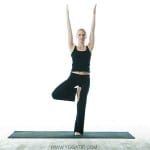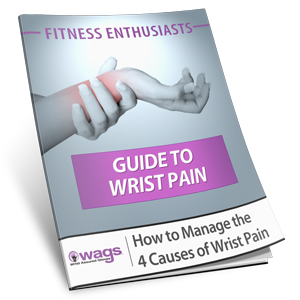I recently attended the fabulous Wanderlust Festival in Stratton Vermont. At the end of a class the instructor encourage us to take the peacefulness we’d just cultivated out into the festival. Specifically he advised to be selective at what we chose to look at and to resist the urge to see everything. As our eyes dart around, so too does our mind. To stay peaceful and centered keep a calm and steady gaze.
 Learn how to improve your balance! In yoga practice we use drishti, a visual fixation or gaze point to enhance the steadiness of our postures. When on a boat, we look to a stable landmark on the horizon to help alleviate the nausea associated with rocking back and forth. Spotting is a technique used by dancers when executing a series of spins and turns to control and prevent dizziness.
Learn how to improve your balance! In yoga practice we use drishti, a visual fixation or gaze point to enhance the steadiness of our postures. When on a boat, we look to a stable landmark on the horizon to help alleviate the nausea associated with rocking back and forth. Spotting is a technique used by dancers when executing a series of spins and turns to control and prevent dizziness.
Our eyes and balance mechanism work together. They are connected through a reflex (vestibulo-ocular reflex) which then connects the eyes to the rest of the body. Simply speaking the head is wired to follow the eyes and the body to follow the head. To experience the impact your eyes have on your balance try standing on one foot with your eyes fixated straight ahead at a steady target. Next keep your head still but move your eyes rapidly back and forth multiple times to look at an object on the right and left and notice what happens. Most likely you’ll lose your balance as your body will shift in the direction your eyes move.
Funny story – Father and son are riding bikes and Dad spots a rock up ahead. He warns his son not to hit the rock. The son trying to avoid the obstacle looks directly at the rock, his head turns slightly, his body and bicycle follow. Boom! He hits the rock. The eyes look at the target, the head and body follow.
 Because the eyes are wired to connect to your muscles throughout your body, when you learn to gaze in the correct place you’ll have better control over your body movements. Where you look has a domino effect on your body’s alignment and posture. If you want your spine to be straight keep the gaze straight ahead. Try this simple experiment. Stand up straight with feet slightly apart (mountain pose) and head stacked directly over neck over shoulders over pelvis. Now avert your gaze, but not your head downward as if trying to see your toes. Notice how your head wants to tuck and your body shift forward –the flexion muscles on the front of your body activate. Now look directly up, eyes only, as if trying to see the ceiling directly above your head, but keep your head stable and centered. Your head, then body wants to tilt back to follow your eyes up and your weight shifts back onto the heels. Moving the eyes upward activates the extension muscles on the back of the body.
Because the eyes are wired to connect to your muscles throughout your body, when you learn to gaze in the correct place you’ll have better control over your body movements. Where you look has a domino effect on your body’s alignment and posture. If you want your spine to be straight keep the gaze straight ahead. Try this simple experiment. Stand up straight with feet slightly apart (mountain pose) and head stacked directly over neck over shoulders over pelvis. Now avert your gaze, but not your head downward as if trying to see your toes. Notice how your head wants to tuck and your body shift forward –the flexion muscles on the front of your body activate. Now look directly up, eyes only, as if trying to see the ceiling directly above your head, but keep your head stable and centered. Your head, then body wants to tilt back to follow your eyes up and your weight shifts back onto the heels. Moving the eyes upward activates the extension muscles on the back of the body.
Where you focus your eyes has an effect on your balance, posture and alignment. Obviously accurate eye movement is crucial for exercises and sports requiring precision coordination between the eyes and hands. But you can also use your eyes to help engage muscles and initiate movements. Eyes steady and straight ahead will facilitate steady postures and balance. Eyes up, down or to the sides will engage the muscles of the neck to move the head then the shoulders and core will follow. Pretty awesome the way we’re wired!
Learn more information about our WAGs work out, Pilates and yoga gloves with wrist support!




